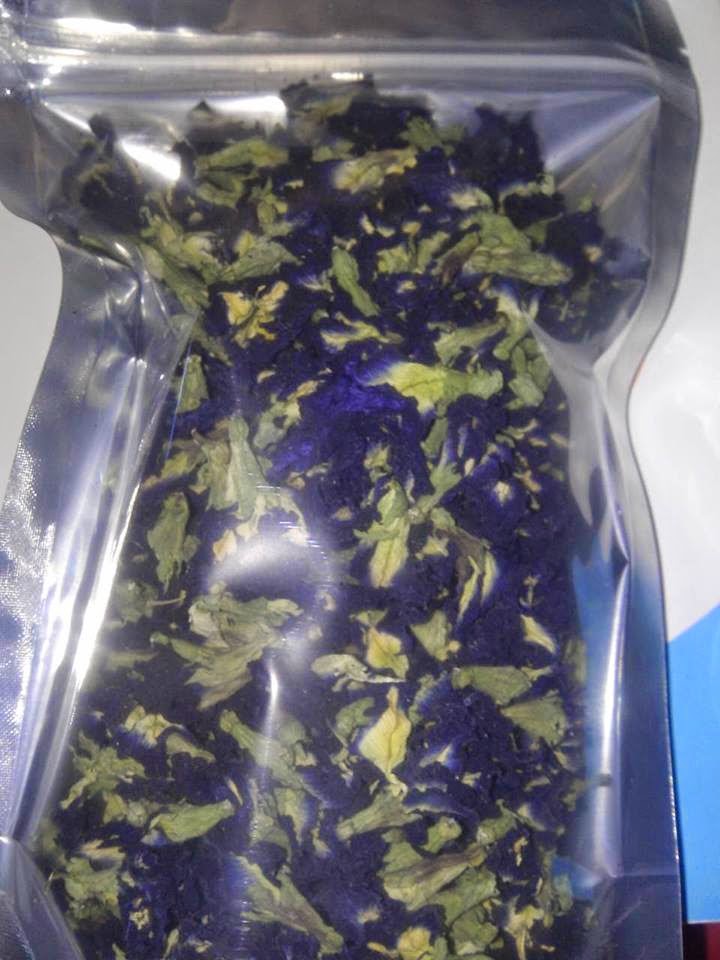
In Thailand I grew butterfly pea plants on a trellis, but often enjoyed the harvest from friends’ gardens. In the Thai village lifestyle in the old days we shared or exchanged our surpluses with one another. The vines can produce many flowers a day, so often they went unused. This meant that at any moment there were always flowers waiting for you in someone’s garden and we helped ourselves when needed. The pigment in the flowers comes from anthocyanins, and has long been widely used in Thai and Malaysian cuisines for blue or purple food coloring for butterfly pea sticky rice. In Thailand, any foods prepared with shades of blue, purple or pink come from dok anchan. In addition, southeast Asia uses the flowers in traditional Ayurvedic medicine.
In addition to wearing a blue butterfly pea flower – ดอกอัญชัน (dok anchan) or Clitoria ternatea – behind my ear while working in my garden, I would like to introduce you to its properties as a Thai culinary flower. Butterfly pea is an annual vine that is native to the land in southeast Asia near the equator. Thais love dok anchan for it beautiful unique looks and for its culinary uses as a food coloring and as an edible flower. My friend Somrak uses dok anchan in her Thai cooking at home, shredding it into a fine ribbon and adding it to rice salad, or for making a tea, or adding blue color extract to steamed jasmine rice. Many hotels in Thailand greet guests with a welcome drink made from dok anchan. But above and beyond all of these uses, our ancestors recognized it for its medicinal benefits, which include its anti-depression, anti-inflammatory, and anti-cancer properties. The blue concentrate added to hair products also promotes healthy hair growth

dried butterfly pea flowers
Thai desert with dok anchan blue color







ไม่มีความคิดเห็น:
แสดงความคิดเห็น